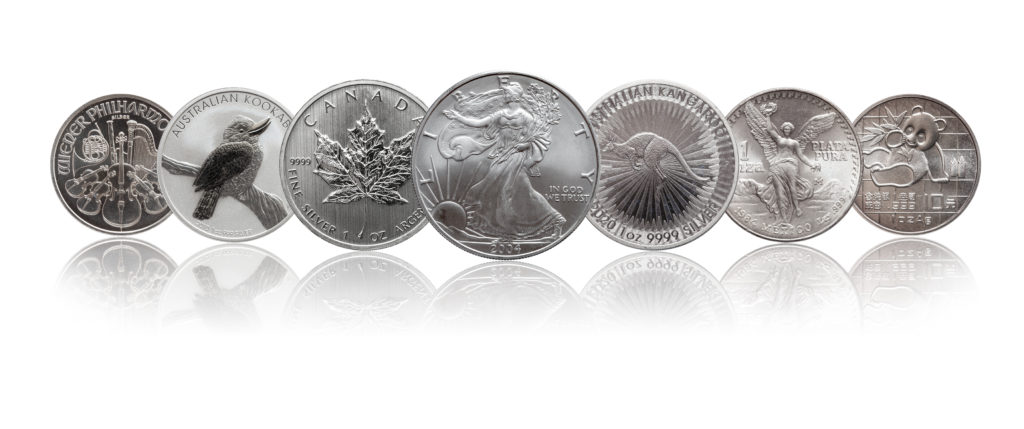When looking at the history of coins or coinage, by no surprise, the research will take you back to ancient Greece and Rome. But the birth of coinage dates back to the Kingdom of Lydia, now known as Turkey.
A coin undergoes several carefully thought-out designs and pressing processes to become a currency for exchanging goods and services, or as a store of value or commemorative issue. Coin minting in ancient times required hard labor. This included molding coins from round pieces of precious metal, which took much production time.
Modern Coin Minting

Today, technological advancements are causing a revolution in the coin production segment of currency and collectible items. Coin minting moved from hammering molds on metal rounds to steam presses, and now electric coin presses. Production of coins has significantly increased since automation took center stage and eliminated manual labor in the minting process.
The coinage evolution opens doors to creativity in the industry, and you can now get a customized coin such as the Star Wars collection minted exclusively. But, there’s more to learn about coin minting technology and how refined the production process has become today.
Below are three things to know:
- Special Minting Techniques
Coin minting processes use old and modern techniques to produce masterpieces. They include:
- Frosting: It’s an ancient technique that makes the effects of a coin stand out. The raised parts of a coin are struck using a treatment to produce a crystallized appearance. Coin minting technological changes replaced manual touch in the production process with a consistent die application to enhance quality.
- High Relief: Coin mintage was a laborious process using a toggle lever press, and achieving consistent high relief was a great deal of work. Also, it affected the coin production volume, especially for the commemorative issues. Luckily, the oil hydraulic press has significantly changed mintage by increasing production using less pressure and identifying suitable quality blanks that are easy to crystalize into high relief.
- Unique Shapes: Miniature sculptures have become popular in the minting arena, and you can order coins in different shapes and sizes. The introduction of 3D to create designs transformed the minting process through digital die engraving. It helps to estimate how much die goes into minting miniature sculptures.
- Micro Inscriptions: Molds have become obsolete with the introduction of computers to imprint small details or wordings on coins. Micro inscriptions are a step forward because machines are adjustable to your preferred size and settings. Microprinting in production lines uses a laser to place engravings on coins through a carefully planned minting process.
- Latent Images: It’s an exciting feature that artists and engineers introduced to coin minting. Images of structures and portraits have become part and parcel of the production process and can be visible on coins when placed at different angles of light. Consequently, the image changes while the coin remains intact.
- Iridescent Colors: It’s possible to have colored images on coins through nanoparticles that refract light and create an optical illusion. Alternatively, lasers can generate nanostructures to bring iridescent colors to parts of a coin through adjustments on the production die.
- QR Codes: Integrating the internet in the minting process opens opportunities for coins to go virtual. It entails imprinting QR (quick response) codes on cash as a tracking and security measure. However, the concept is still under review since it is still in the developmental stages.
- Materials
In ancient times, coin minting was a strenuous job that made it hard to use two metals. But technological advancements brought the following innovative coin minting process:
- Bimetallic Coins: A combination of two metals, such as gold and silver, in one coin separated as a ring and a core. When striking firmly, the bimetallic coin minting process uses temperature fluctuation to join the two blanks. Engraving follows computer settings for micro imprinting.
- Trimaterial Coins: Polymer ring became an integral part of the coin minting development programs in Europe since it enables color effects on coins. The same technology application is available for banknotes, appearing when the cash is under red or ultraviolet lights.
- Surface Treatment After Striking
After striking, the fine details of a coin must undergo thorough examination to produce quality mints. So, a color application should follow the computer settings to ensure that it matches the designs. The same goes for enamel to help the coins shine before proceeding to patinating, finishing, inlays, and hologram (this last is the final surface treatment).
Conclusion
Coin minting technology is fast changing the coin production process by incorporating new ideas to attract investors and art collectors. It reduced the manual labor and time to create a single coin.
However, the history of coinage and its ancient techniques are still helpful in the minting processes, with a bit of innovation to produce masterpieces. Production has significantly increased through advanced press technology that pays attention to details on a coin.

